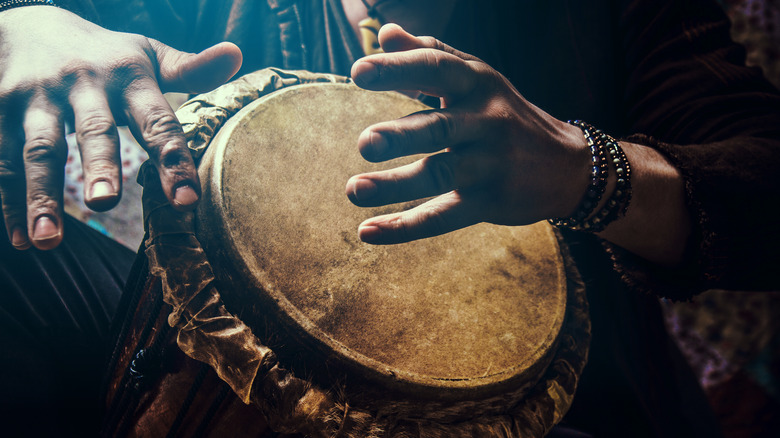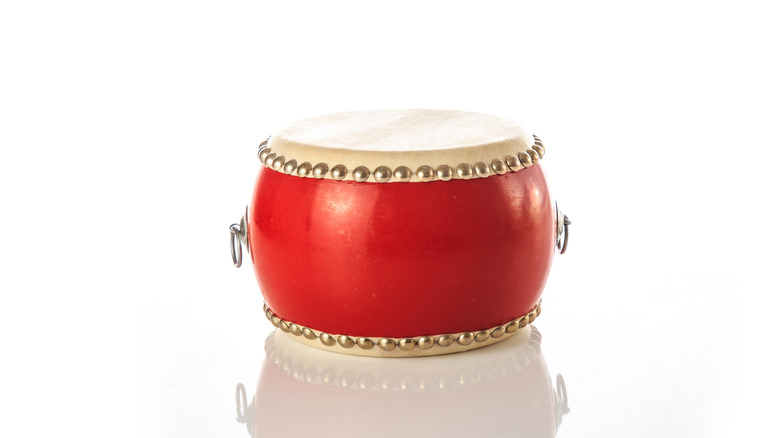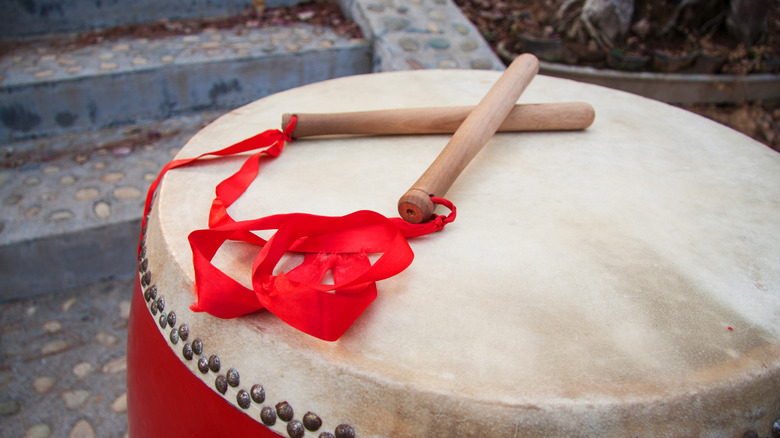The Oldest Recorded Drum In History Is Over 7500 Years Old
Whether it's a hippie in the drum circle at your local park or Ringo Starr in The Beatles, the drummer lays the foundation for any musical circle, keeping the other instruments on track and providing the "pulse" of the song (via Marshall). Although a drummer's neighbor might complain that the incessant beating of the drum disturbs them, it's an essential instrument for any musical group.
Closely tied to dance, drum rhythms can be used to enter a trance-like state similar to meditation that has been used in ceremonies for thousands of years. Between 1000 and 500 B.C., people in Sri Lanka and Africa used drums as a means of communication, per History of Drums. In fact, drums are the world's oldest instruments, originally used by our ancestors simply beating sticks around, according to History of Drums. But the oldest single drum that there is archaeological evidence of is called the alligator drum, according to Uncovering Sound.
What is the alligator drum?
The alligator drum was discovered in China and is thought to have been used by people there in the years 5500 to 2350 B.C., per Uncovering Sound. In a book of ancient Chinese songs called "Shijing" dating back to the 11th century B.C., cultures of the time wrote about the alligator drum, which they reported using in spiritual ceremonies (via Uncovering Sound). Much like some drums used in ceremonies today, the drums were a tool used by shamans. Later on in the Zhou Dynasty, ancient drums in China were important in war times to signal things among the military, according to Study at China Best Universities.
Today, drums of this style are typically made of wood or fiberglass, with goat or cow hides stretched over the opening to produce the trampoline-like surface to tap on, according to Sound Adventurer. Back in ancient China, they were made of wood or hardened clay, with the skin of alligators stretched over them (via Uncovering Sound).
Significance of the alligator
These ancient artifacts were discovered in Dawenkou and Longshan within the Shandong region of China, which is located on the border of the Yellow Sea, to the west of North and South Korea (per Uncovering Sound). According to the Smithsonian's National Zoo & Conservation Biology Institute, alligators used to be abundant in Eastern China, although today their range is limited and they are listed as critically endangered.
Per Uncovering Sound, those playing the alligator drums could have been trying to mimic the mating sounds of the alligators, which may have inspired much of the dragon symbolism that still exists in Chinese culture today. The dragon and the alligator were "traditionally described as having a peaceful nature," so invoking their natural sounds with the drum could be a way to summon good luck, power, and even to bring rain. In rain ceremonies, the shaman would become the dragon using the music of the drums in order to summon rain.


